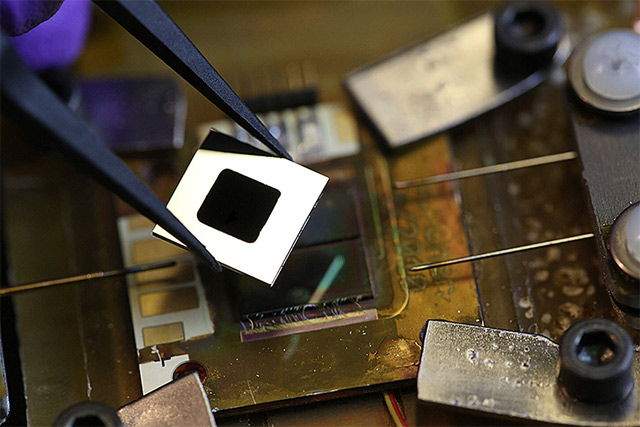Increasing the efficiency of solar panels with a heating element
Researchers at the Massachusetts Institute of Technology have come up with a way to increase the efficiency of conventional solar panels. They suggest introducing an intermediate heating element between the solar flux and the surface of the panels. The idea is that when heated, this element will emit in a spectrum that is better suited for absorption by standard silicon elements.

A nanophotonic solar thermophotoelectric element composed of several layers of carbon nanotubes as an absorber and a Si / SiO 2 photonic crystal as an emitter, as well as a 0.55 eV solar photo cell
Contrary to logic, here the addition of an additional conversion step actually increases the efficiency, since it allows you to get energy from photons at frequencies that usually go to waste.
Conventional solar panels convert the energy of only those photons into electricity that correspond to specific frames at the lower and upper limits of the range. A silicon chip is sensitive to a wide range, but many photons pass by it. The addition of a carbon nanotube absorber solves this problem. This layer is sensitive to a wider frequency range and, when bombarded by photons, heats up to 962 ° C. When heated, it emits photons of a strictly defined energy, which are perfectly absorbed by the photocell and converted into electricity.
Theorists predicted a similar technology several years ago, and now it has been put into practice. They said that thermocouples would allow to overcome the theoretical limit of the efficiency of solar energy conversion for silicon microcircuits, set at 33.7% (the Shockley-Quisser limit). In this case, the efficiency can theoretically reach 80%.
However, in practice, scientists are still far from the theoretically maximum limit. Previous experiments could not demonstrate an efficiency above 1%, but the Massachusetts Institute of Technology recorded a conversion efficiency of 3.2%, and the authors of the scientific work are confident that in the near future they can increase it to 20%. According to them, this is enough to release a commercial product.
A scientific paper describing a thermophotoelectric element is published in the journal Nature Nanotechnology.

A nanophotonic solar thermophotoelectric element composed of several layers of carbon nanotubes as an absorber and a Si / SiO 2 photonic crystal as an emitter, as well as a 0.55 eV solar photo cell
Contrary to logic, here the addition of an additional conversion step actually increases the efficiency, since it allows you to get energy from photons at frequencies that usually go to waste.
Conventional solar panels convert the energy of only those photons into electricity that correspond to specific frames at the lower and upper limits of the range. A silicon chip is sensitive to a wide range, but many photons pass by it. The addition of a carbon nanotube absorber solves this problem. This layer is sensitive to a wider frequency range and, when bombarded by photons, heats up to 962 ° C. When heated, it emits photons of a strictly defined energy, which are perfectly absorbed by the photocell and converted into electricity.
Theorists predicted a similar technology several years ago, and now it has been put into practice. They said that thermocouples would allow to overcome the theoretical limit of the efficiency of solar energy conversion for silicon microcircuits, set at 33.7% (the Shockley-Quisser limit). In this case, the efficiency can theoretically reach 80%.
However, in practice, scientists are still far from the theoretically maximum limit. Previous experiments could not demonstrate an efficiency above 1%, but the Massachusetts Institute of Technology recorded a conversion efficiency of 3.2%, and the authors of the scientific work are confident that in the near future they can increase it to 20%. According to them, this is enough to release a commercial product.
A scientific paper describing a thermophotoelectric element is published in the journal Nature Nanotechnology.
